On March 6, 2025, US President Trump signed an executive order "Establishing a Strategic Bitcoin Reserve and US Digital Asset Reserve". The next day, the White House Crypto Summit was held.
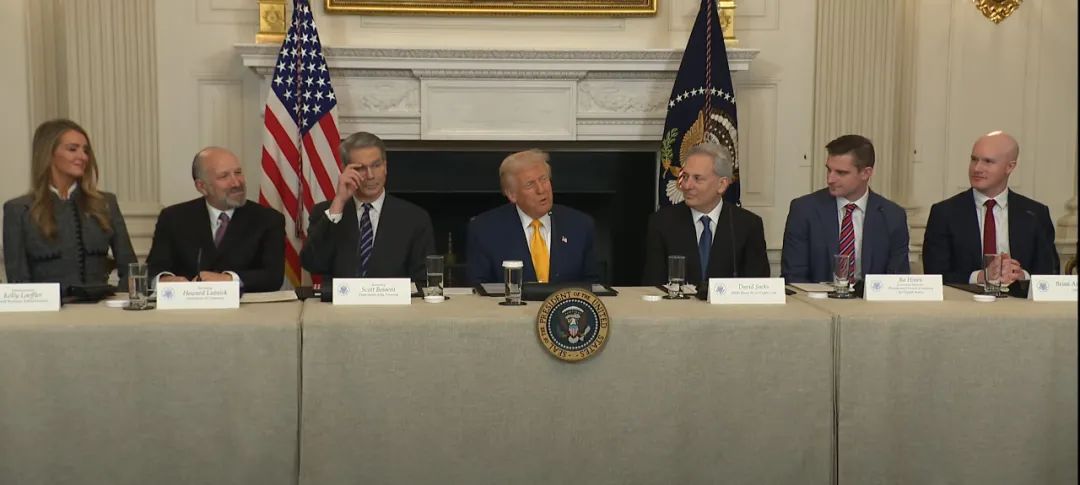
This is another important milestone for the crypto industry.
Bitcoin enters the mainstream: the new chess game of US strategic reserves
We look at this from the perspective of the US government. The purpose of the US establishing a strategic reserve of Bitcoin is to strengthen and consolidate the US's leading position in the global financial system.
The executive order makes it clear: “The U.S. government currently holds a large amount of Bitcoin, but has not yet developed relevant policies to realize the strategic value of these Bitcoins in the global financial system. Just as it is in the national interest to properly manage the country’s ownership and control of other resources, we must use rather than restrict the potential of digital assets to promote national prosperity.”
There have been many precedents of strategic reserves in the history of the United States. For example:
Strategic gold reserves - In the 19th century, the United States implemented the gold standard, and the value of the US dollar was supported by gold reserves. In 1933, President Roosevelt signed Executive Order 6102, prohibiting private gold holdings and forcing gold to be recycled and deposited in federal savings banks; in 1934, the United States introduced the Gold Reserve Act, transferring gold reserves to the Treasury Department; in 1944, the United States passed the Bretton Woods system, promising to exchange gold at $35 per ounce, making the US dollar an international currency; it was not until 1971 that President Nixon announced the decoupling of the US dollar from gold, the Bretton Woods system collapsed, and the gold standard ended.
Strategic Petroleum Reserves - In 1974, the United States reached an agreement with Saudi Arabia and OPEC countries that international oil trade must be conducted in US dollars, and the US dollar naturally became the global foreign exchange reserve currency; in 1975, the US Congress passed the Energy Policy and Conservation Act to establish the Strategic Petroleum Reserve (SPR). At its peak, the US SPR reserves were nearly 700 million barrels, and in 2024, the reserves dropped to 350 million barrels. On June 9, 2024, the petrodollar agreement between the United States and Saudi Arabia officially expired, and Saudi Arabia announced that it would not renew it.
Of course, there are also some strategic reserves whose impact is not so far-reaching, including uranium, rare earths, silver, grain, etc.
Less than a year after the end of the petrodollar system, the United States has established a strategic Bitcoin reserve, which shows that the consensus on Bitcoin as "digital gold" is already strong.
Strategic considerations for the U.S. strategic bitcoin reserve
1. Consolidation of the US dollar's financial hegemony
For a long time, the US dollar has dominated the global financial system and is the main settlement currency for international trade and financial transactions. However, with the changes in the global economic landscape, the rise of emerging economies, and the reshaping of the geopolitical landscape, the financial hegemony of the US dollar is facing challenges.
As a decentralized digital currency, Bitcoin has unique advantages in global circulation. Its transactions are not controlled by traditional financial institutions and governments. It can break through geopolitical restrictions and achieve fast transactions and convenient circulation on a global scale.
If the United States can occupy the commanding heights in the Crypto field by strengthening the connection between the US dollar and Bitcoin and Crypto, and by taking the lead in establishing a strategic reserve of Bitcoin, and incorporate the Crypto market into the US dollar settlement system, thereby consolidating the US dollar's position in international financial transactions, it will undoubtedly be another powerful defense of its US dollar financial hegemony in the new financial era.
As Trump mentioned at the White House Crypto Summit, building a Bitcoin reserve is like building a "virtual Fort Knox" (Fort Knox is a base in the United States where the Treasury gold is stored). At the same time, he also mentioned that congressional lawmakers are pushing for bills on the regulation of the US dollar stablecoin and digital asset market, and he will ensure that the status of the US dollar remains stable in the long run.
The chess has been played, and the situation has been established. From the perspective of top-level design, this may be the first time that such an idea has been publicly announced. But in fact, American companies have already laid out key tracks in the field of Crypto: in terms of asset issuance - although the industry still criticizes the inability to achieve Trustless in the process of RWA tokenization, Franklin Templeton has become the largest traditional financial institution issuing U.S. debt RWA; in terms of asset securitization - the total asset management scale of the U.S. BTC spot ETF issued by traditional financial institutions led by BlackRock has exceeded 100 billion US dollars; in terms of asset trading and custody - Nasdaq-listed Coinbase is the main custodian of ETFs.
What is most lacking now is a set of clear regulatory bills to protect the crypto industry from similar "Biden administration's unclear-boundary suppression" and the overlapping, disorderly, and ambiguous supervision of multiple government departments.
2. A weapon against inflation
In theory, establishing a strategic Bitcoin reserve can hedge against inflation to a certain extent.
According to the World Bank data, the M2 curve of the United States from 1960 to the present is as follows:
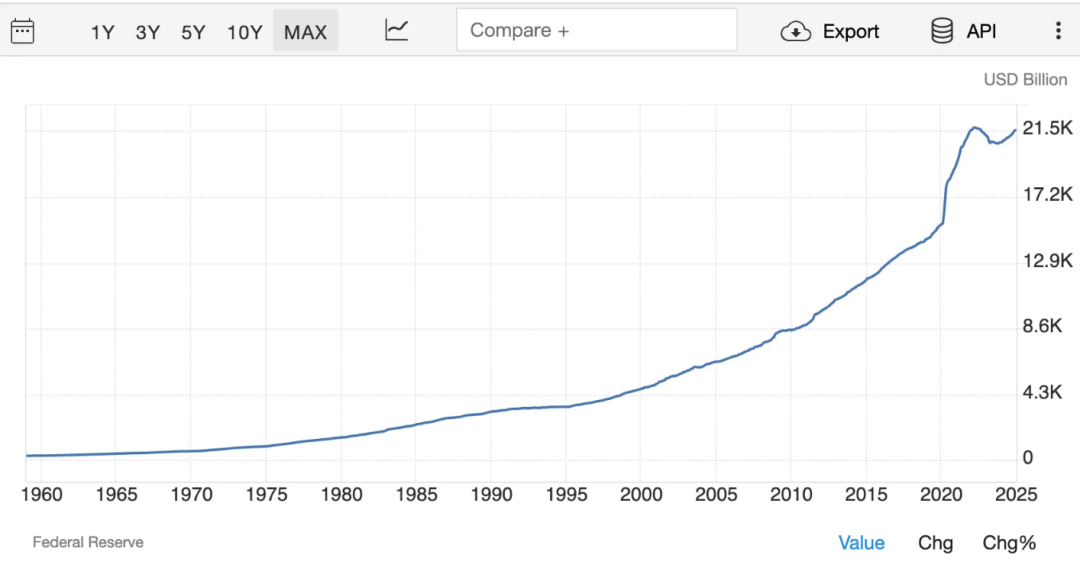
The U.S. national debt size curve is as follows:
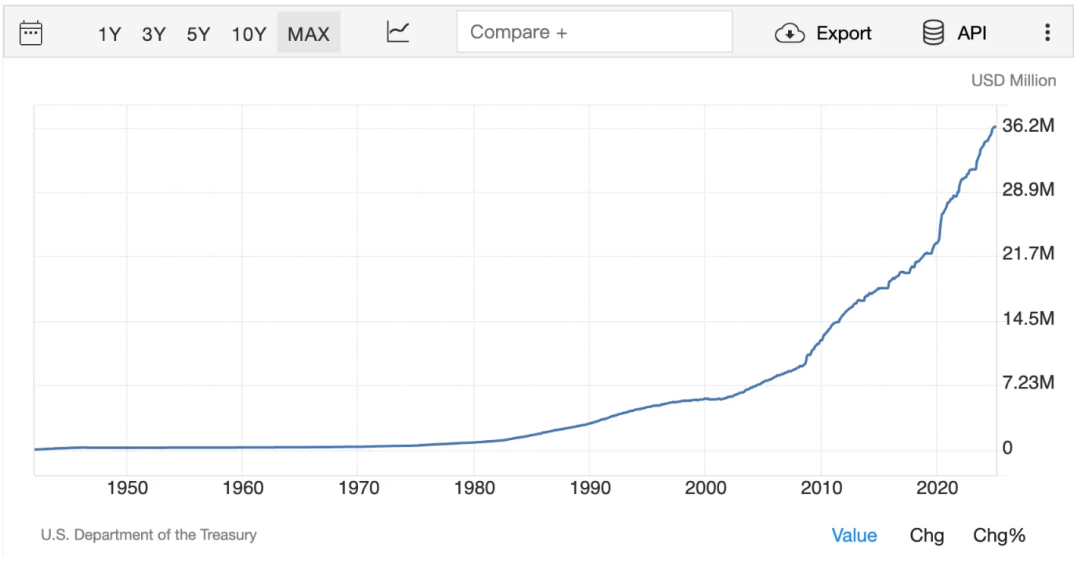
The total U.S. federal government debt has exceeded $36 trillion, a record high. In addition, the proportion of U.S. federal government debt to GDP has continued to rise in recent years, reflecting that the debt growth rate exceeds the economic growth rate. Due to the expansion of debt scale and the current high interest rate situation, the U.S. federal government's interest expenditure in 2024 will reach about $882 billion, and the fiscal burden is a bit heavy.
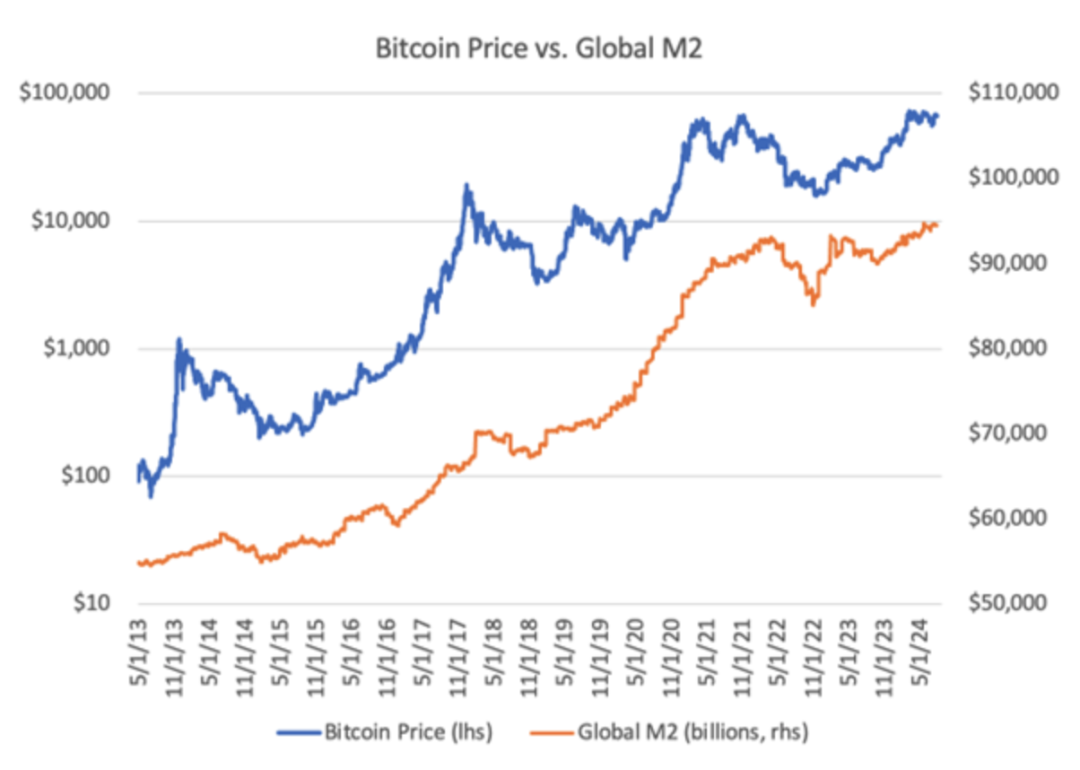
Bitcoin is "digital gold" and can be used as a potential "weapon" to fight inflation and solve national debt problems. All governments will stimulate the economy by issuing more currency, which will lead to currency depreciation and inflation. The total amount of Bitcoin is constant, so it is regarded as an ideal asset to resist inflation.
There are many reasons that prompted the US government to establish a strategic Bitcoin reserve. In addition to consolidating the hegemony of the US dollar and fighting inflation, from the perspective of financial innovation needs, Bitcoin and blockchain have brought new development opportunities to the financial industry; from the perspective of global financial competition, as mentioned in this executive order, "the country that takes the lead in establishing a strategic Bitcoin reserve will gain a strategic advantage"; from the perspective of the interests of the US authorities, Trump is fulfilling his campaign promise, and the influence of US Crypto-related interest groups in this Trump administration has increased significantly, which has had some impact on government decision-making.
Profound impact on the Crypto market
Trump's executive order is less positive than market expectations
The key requirements of this executive order are as follows:
1. The Secretary of the Treasury shall establish an office to manage and control the custodial account of the Strategic Bitcoin Reserve (SBR), which is composed of BTC held by the Treasury Department and confiscated in criminal or civil cases. BTC deposited in the SBR may not be sold.
2. The Treasury Department should set up an office to manage and control the custody account of the "U.S. Digital Asset Reserve", which is funded by all digital assets held by the Treasury Department except BTC. The Treasury Department should develop a strategy for responsible management of the U.S. digital asset reserve (it does not say that it cannot be sold).
3. The Secretary of the Treasury and the Secretary of Commerce should develop a strategy to obtain additional government BTC without increasing the budget or incurring additional costs to American taxpayers. (How to obtain more BTC? You can figure it out yourself...)
The US government currently has about 200,000 BTC, which were confiscated from criminal or civil cases. Trump asked the Secretary of the Treasury and the Secretary of Commerce to develop a strategy to "increase the holdings of Bitcoin reserves without incurring any cost to taxpayers."
The executive order fell short of market expectations, mainly because the community was intrigued by another federal bill - the "Bitcoin Act" submitted by Senator Cynthia Lummis (proposing that the US Treasury purchase 1 million BTC within 5 years and hold it for 20 years), which has been rejected.
Crypto-related bills are still being promoted at the federal level, with a neutral impact on the market
In the United States, there is still some difference between the Presidential Executive Order (EO) and Congressional Legislation. Unfortunately, no Bitcoin-related bills have been successfully passed at the federal level recently. There are currently three Crypto-related bills being promoted at the federal level:
- HR148: Keep your Coins Act of 2025
- S394:GENIUS Act of 2025
- HRes111: Expressing support for blockchain technology and digital assets.
Among them, HRes111 is a bit messy, with little content and a high probability of failure; Keep your Coins Act (HR148) is a proposal to protect individuals' right to self-custody of crypto assets; GENIUS (Guiding and Establishing National Innovation in US Stablecoins) Act is a regulatory bill for US dollar stablecoins. The content of this bill is to set licensing and reserve requirements for issuers of US dollar stablecoins.
Trump said at the White House Crypto Summit that he hoped that the GENIUS Act would be sent to his desk for his signature before the August recess. Perhaps the community does not have much expectations for this bill because it does not seem to have any substantial benefits.
Strategic Bitcoin Reserve Acts by State Governments May Be Expected
In addition to federal legislation, some state governments are also actively promoting the legislation of the Startegic Bitcoin Reserve Act, such as Arizona, Texas, New Hampshire, Oklahoma, etc. Five states have also vetoed it, including Montana, North Dakota, South Dakota, Pennsylvania, and Wyoming.
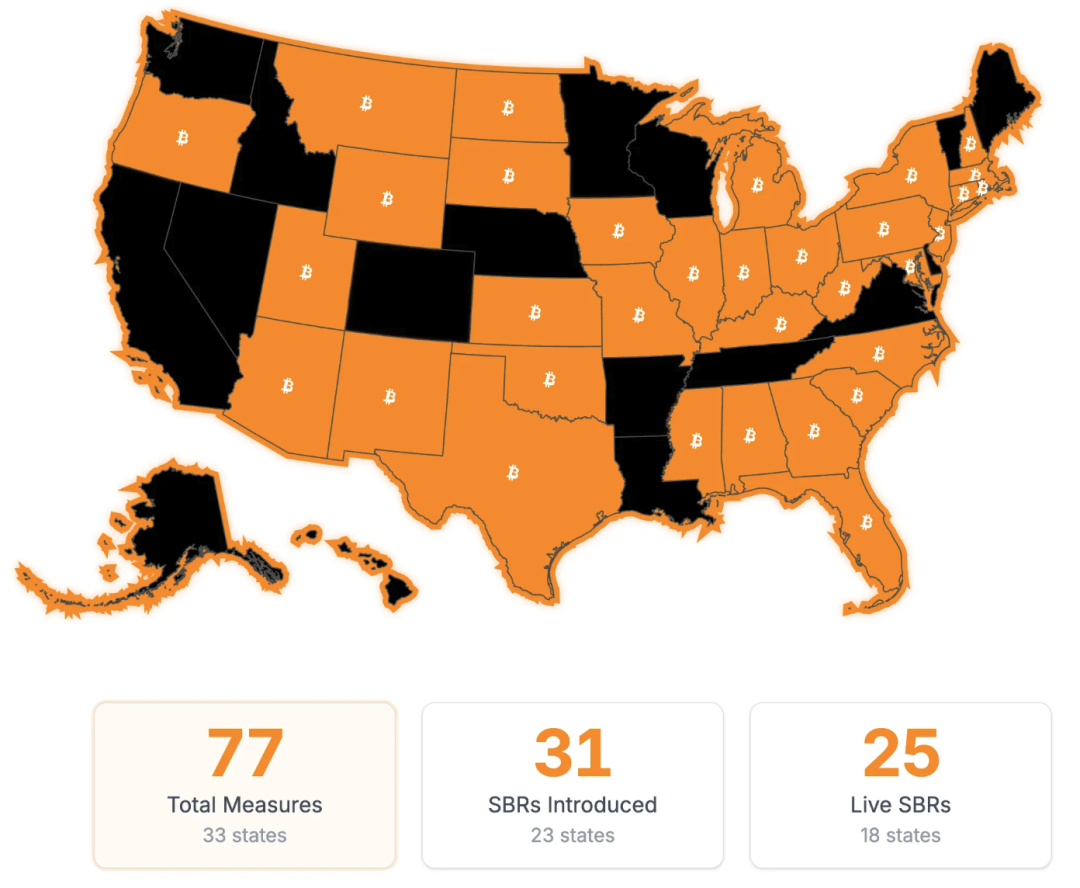
The process for state governments in the United States to establish strategic Bitcoin reserve bills generally requires: first, state legislators or committees draft and submit them to the state legislature; then vote on them by the House of Representatives and the Senate of the state legislature; finally, if both houses of the state legislature pass them, they will be sent to the governor for signature.
The following figure shows the ongoing legislative process for the Strategic Bitcoin Reserve Act in Arizona:
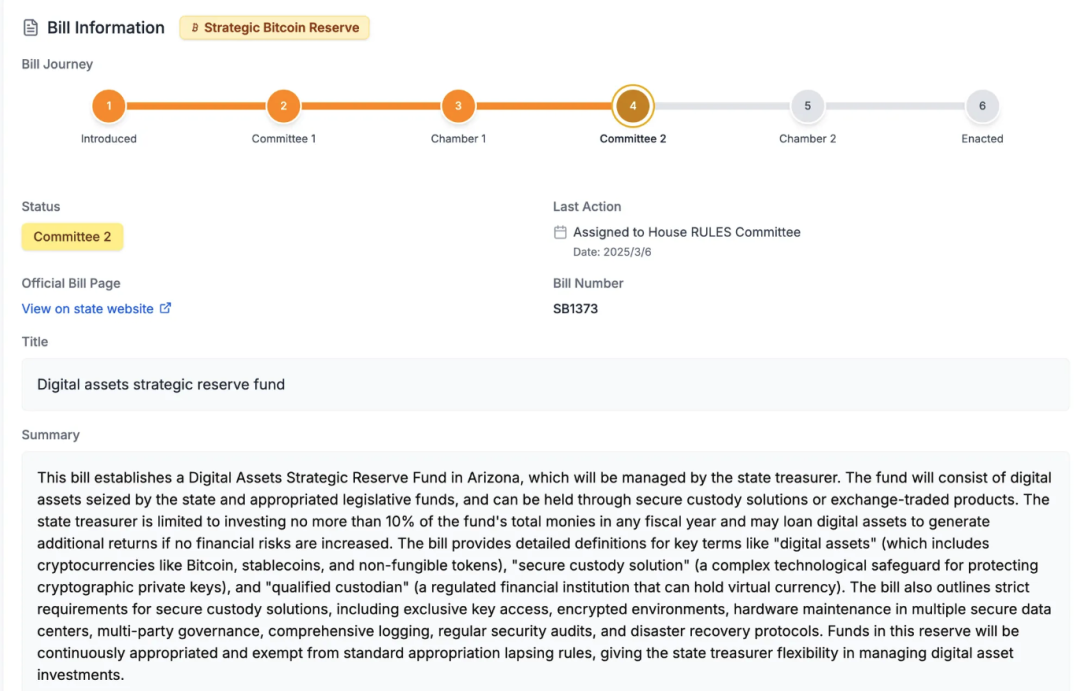
The content of each state's strategic Bitcoin reserve bill is different. For example, Oklahoma proposes to allow the state government to invest 10% of public funds in Bitcoin or any digital asset with a market value of more than US$500 billion; Kentucky proposes to invest up to 10% of the remaining cash in cryptocurrencies with a market value of more than US$750 billion and stablecoins with appropriate regulatory approval.
In general, Trump's strategic Bitcoin reserve EO is definitely a positive in the long run. In terms of policy, as long as Trump's executive orders do not change overnight, there will be a friendly policy environment for at least the next few years. In terms of funds, although there is no plan to increase holdings of millions of BTC at the federal level, if the proposals of various states are passed, there may be real money investment. In terms of market supply and demand, on the supply side, the Bitcoins confiscated by the US government are deposited into the strategic Bitcoin reserve and cannot be sold, which reduces the circulation and selling pressure of Bitcoin in the market; on the demand side, the US government's strategic Bitcoin reserve decision may attract more investors' interest in Bitcoin, including some traditional financial institutions and large enterprises, which may eliminate their concerns about conducting encryption business, and may even trigger more countries to establish strategic Bitcoin reserves.
Conclusion
To quote Michael Saylor: History will remember the moment the United States Strategic Bitcoin Reserve was established — a turning point in the financial and geopolitical landscape of the 21st century.












